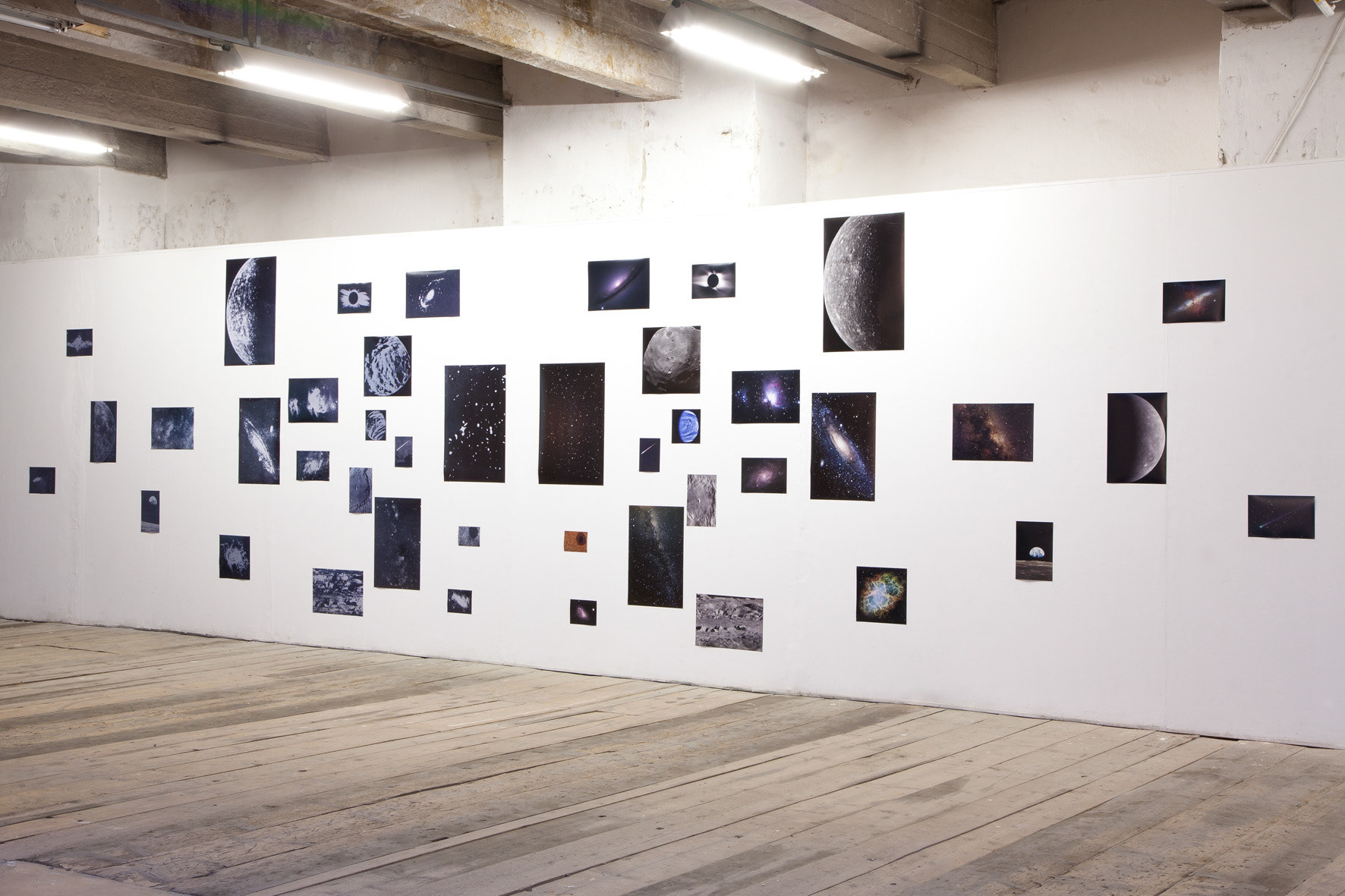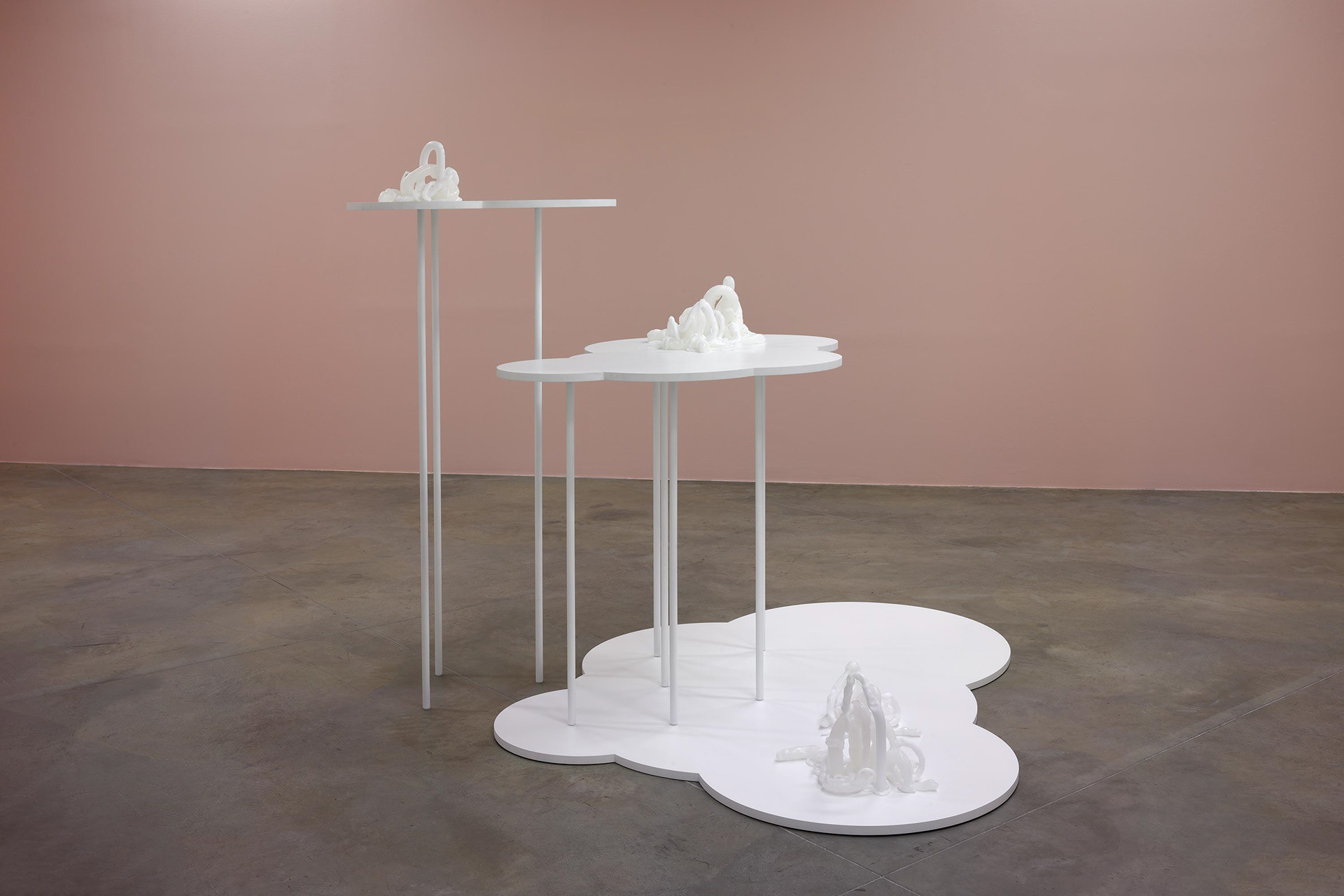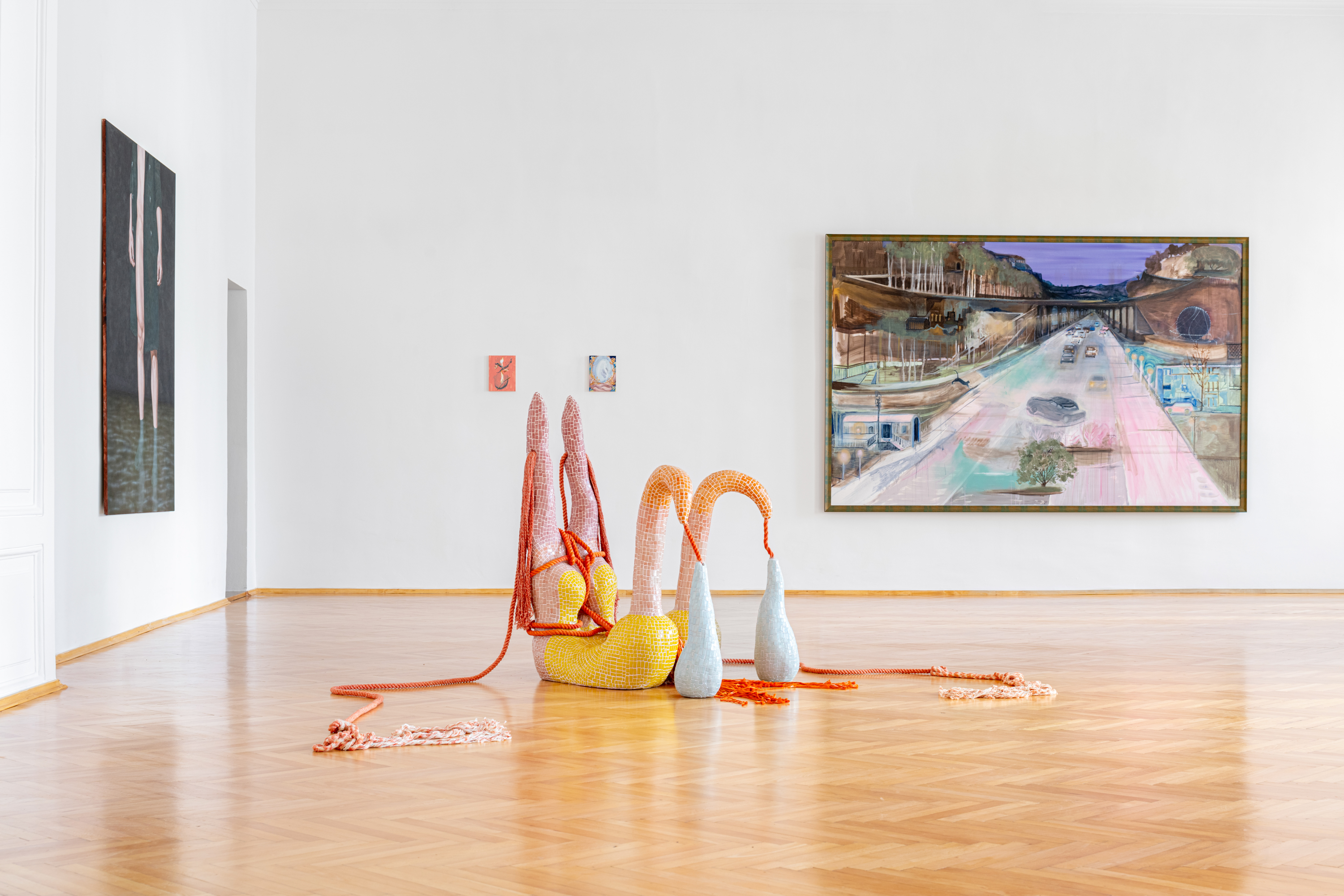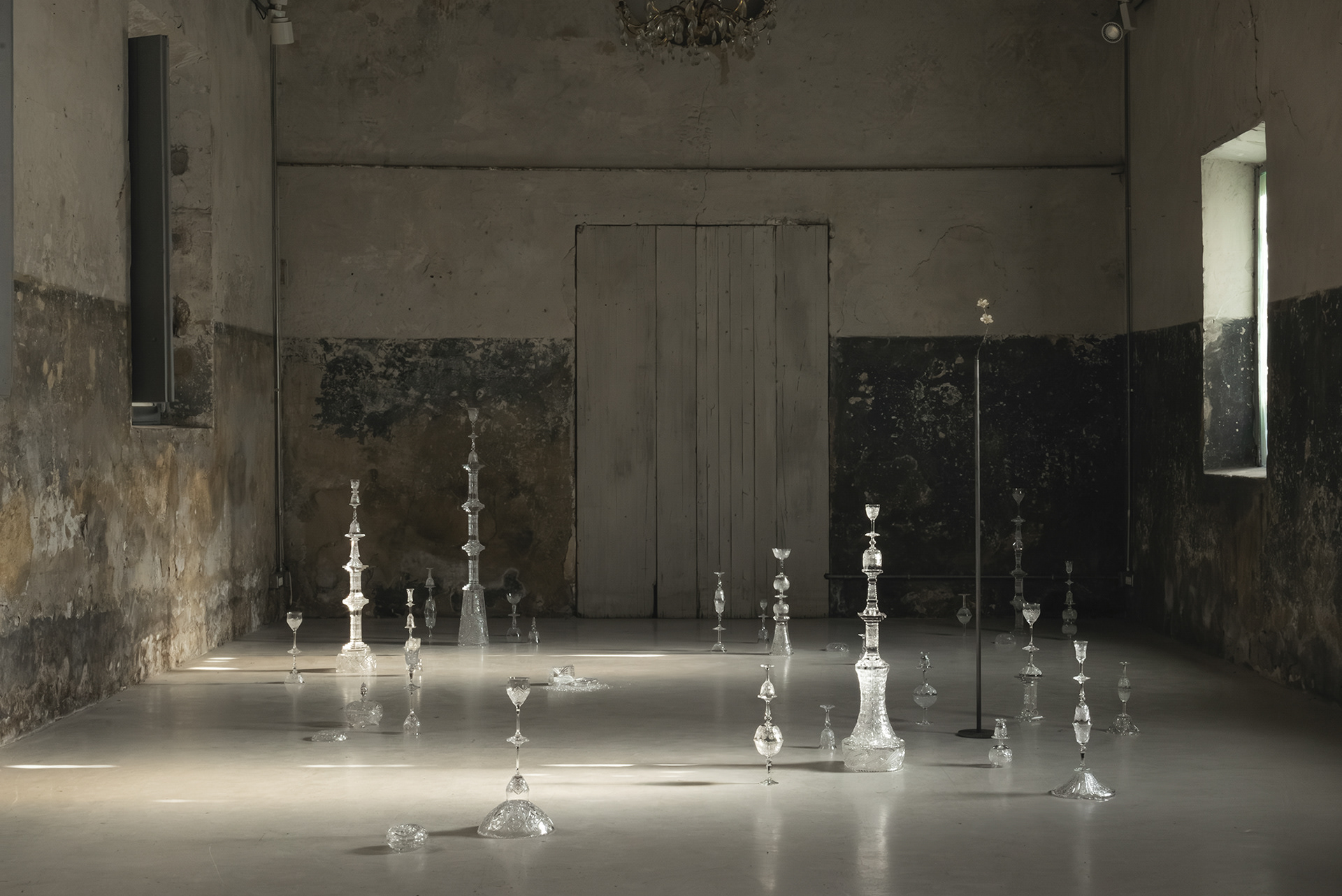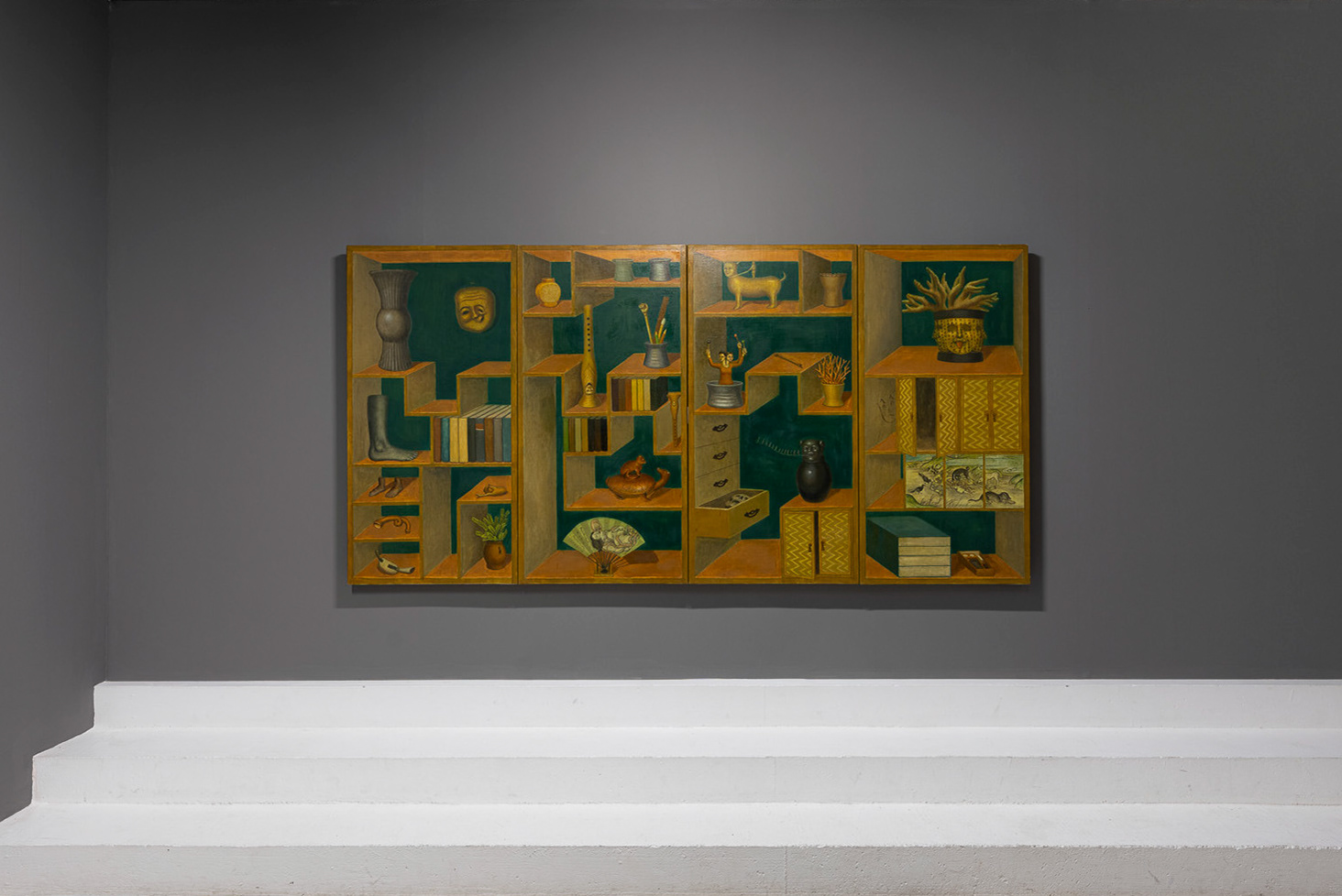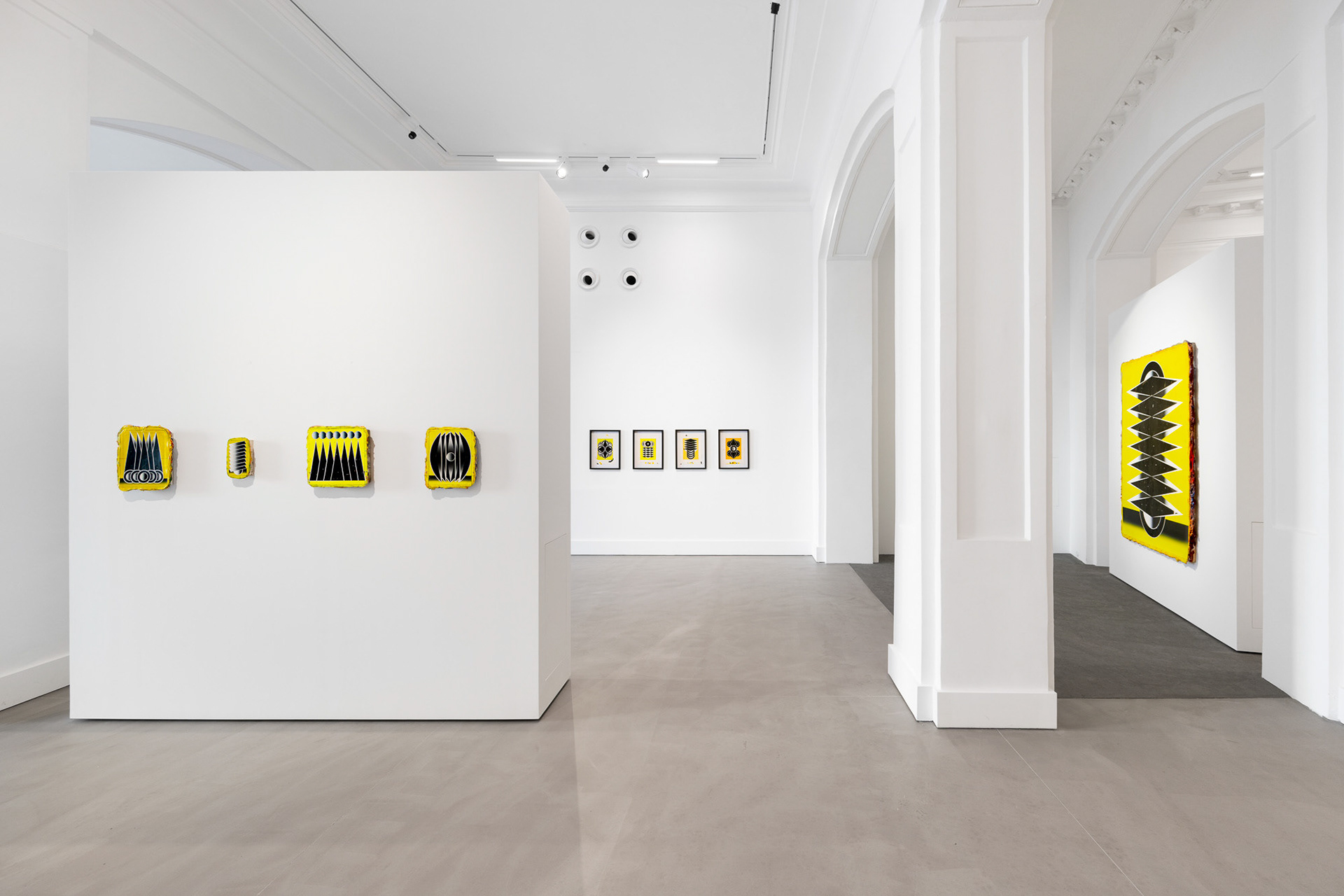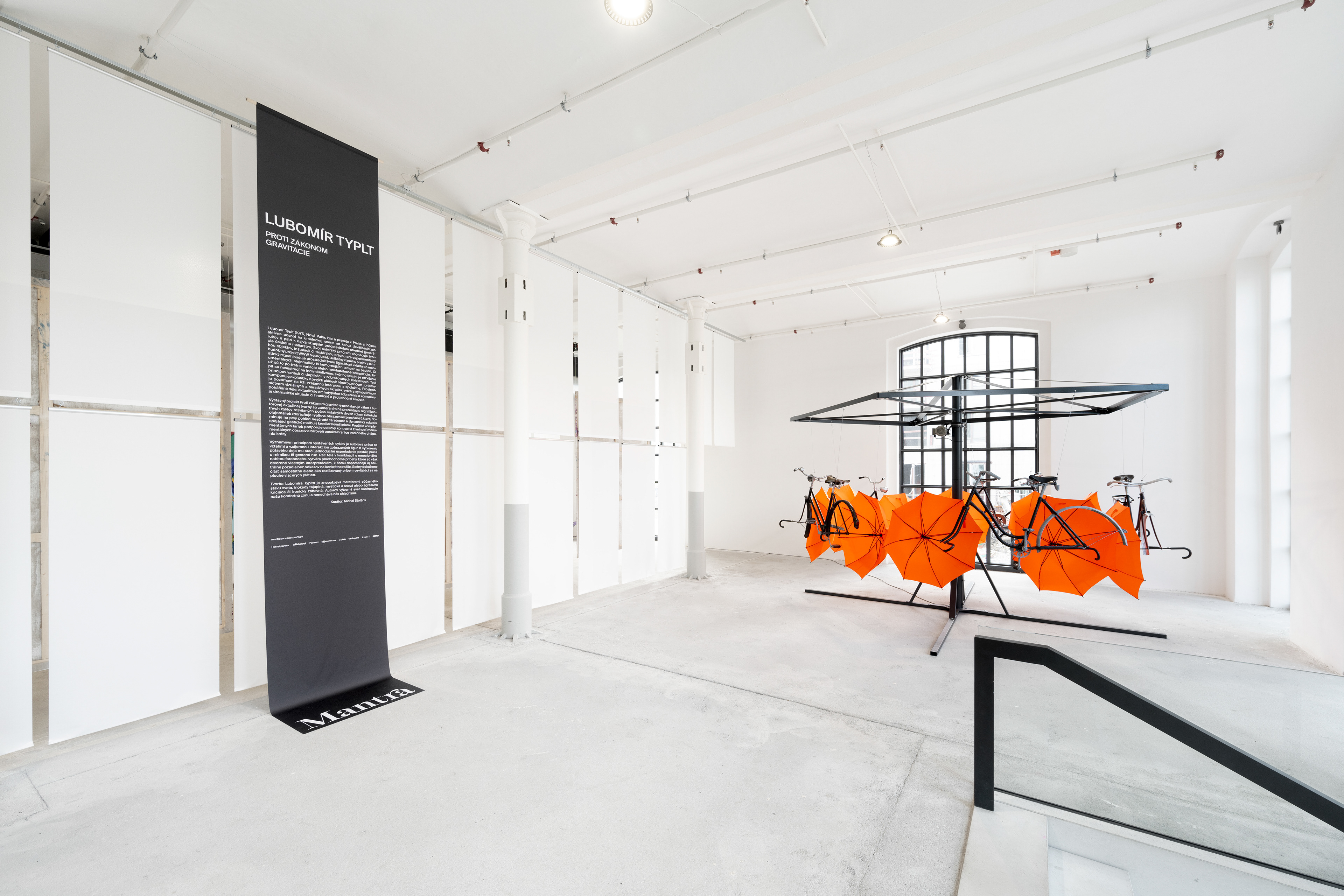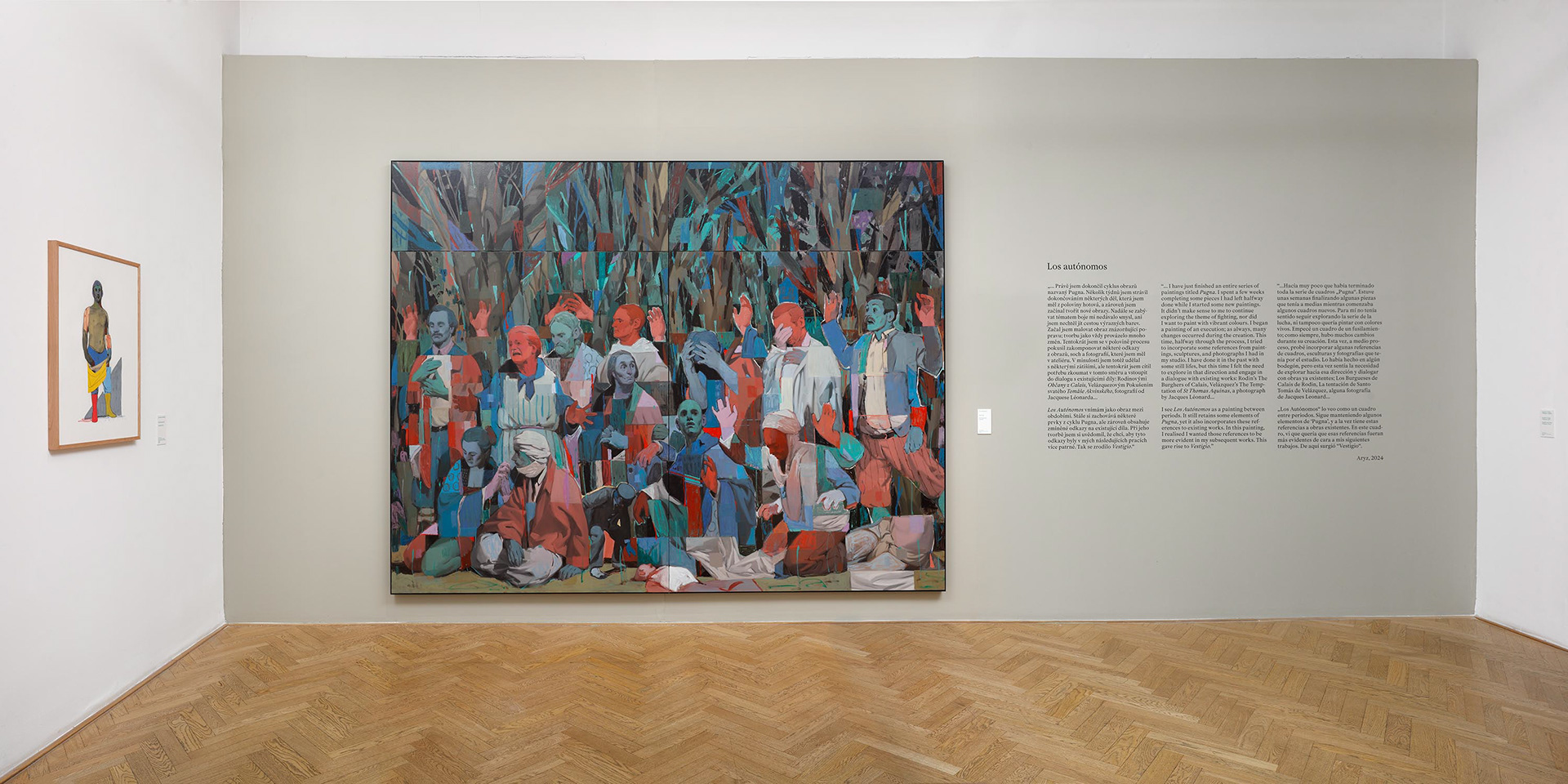
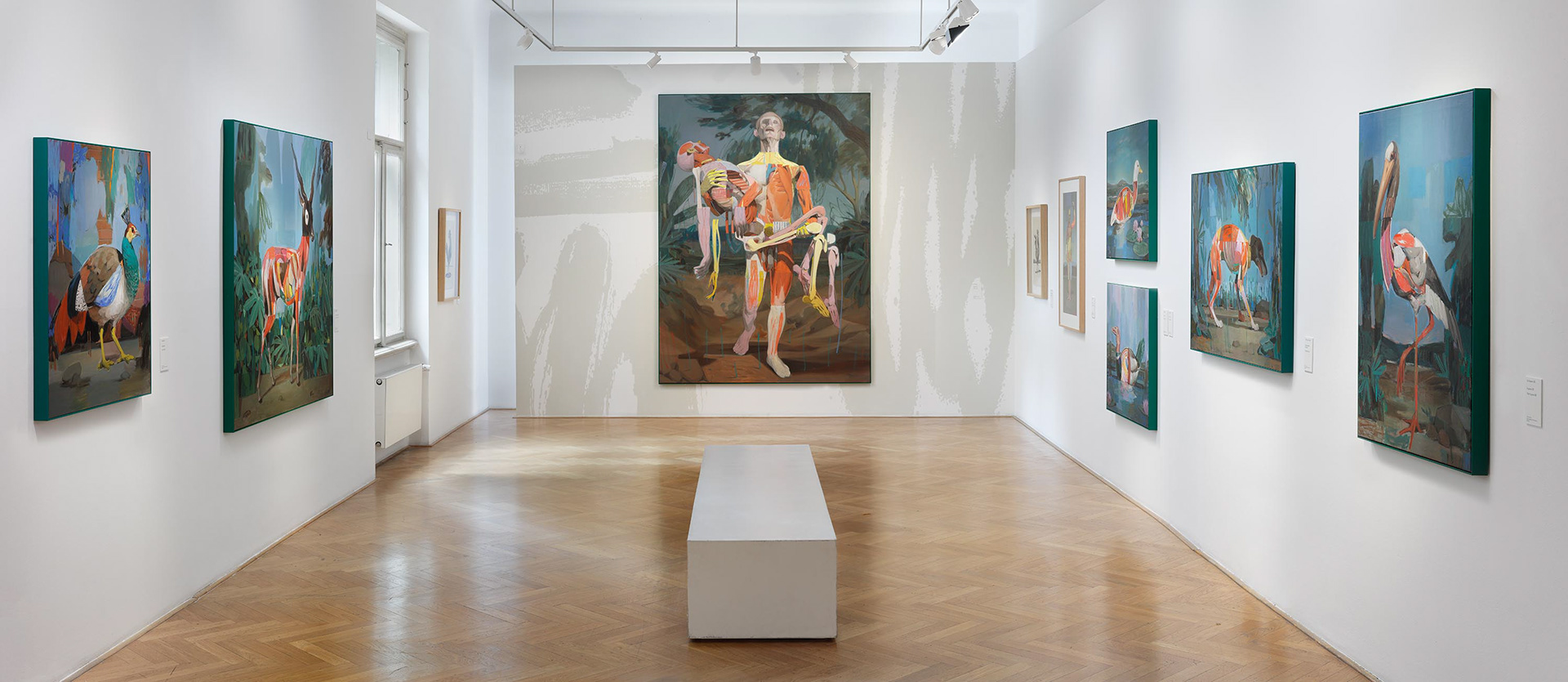
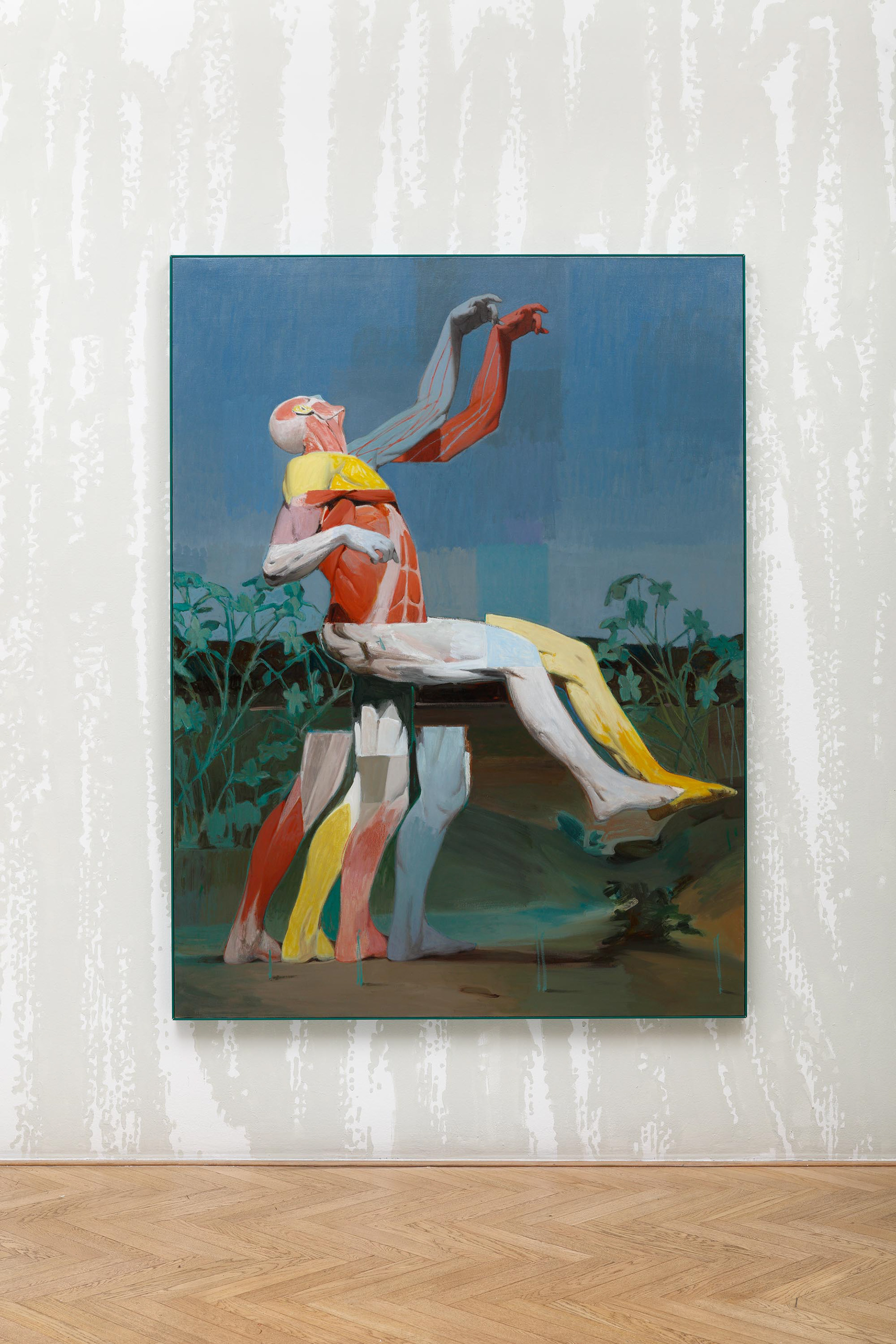
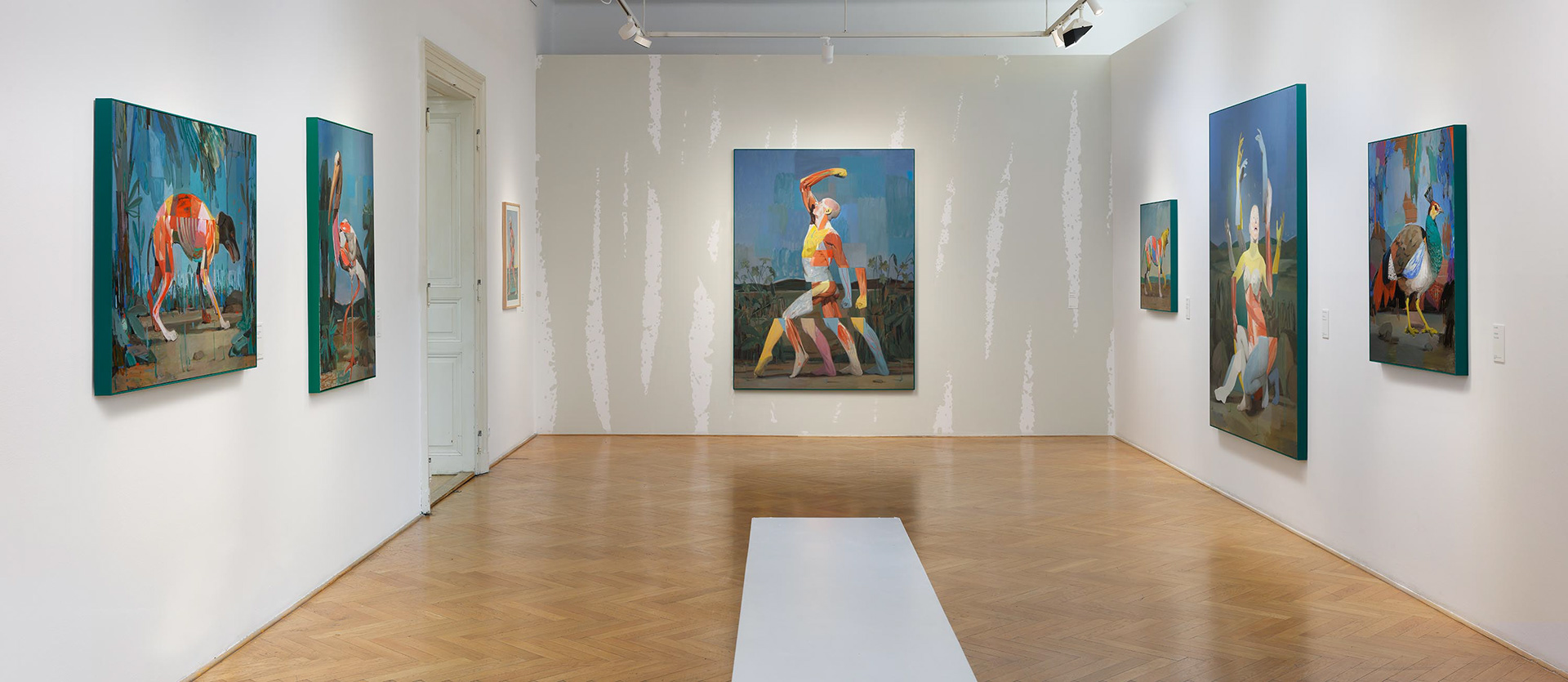

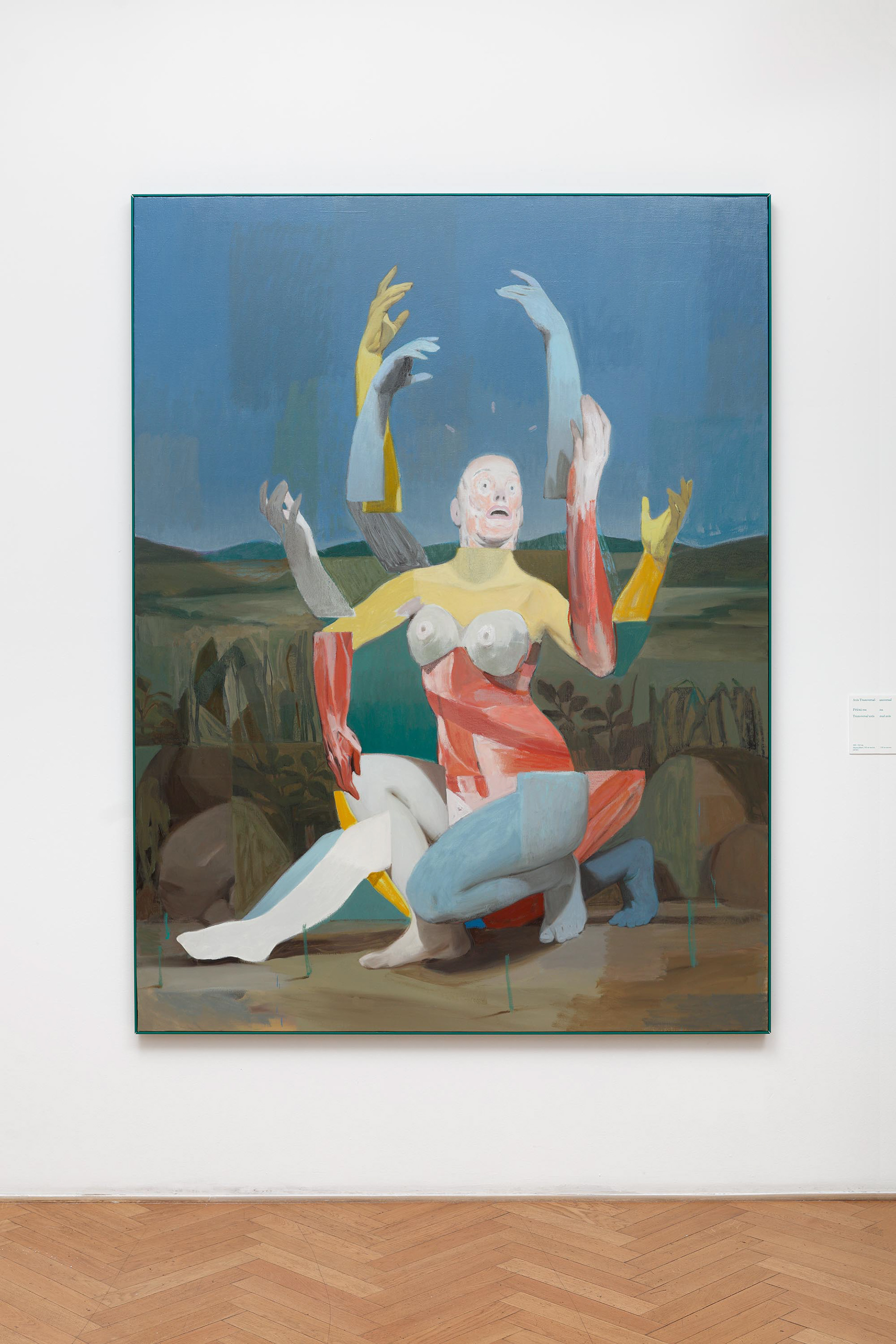
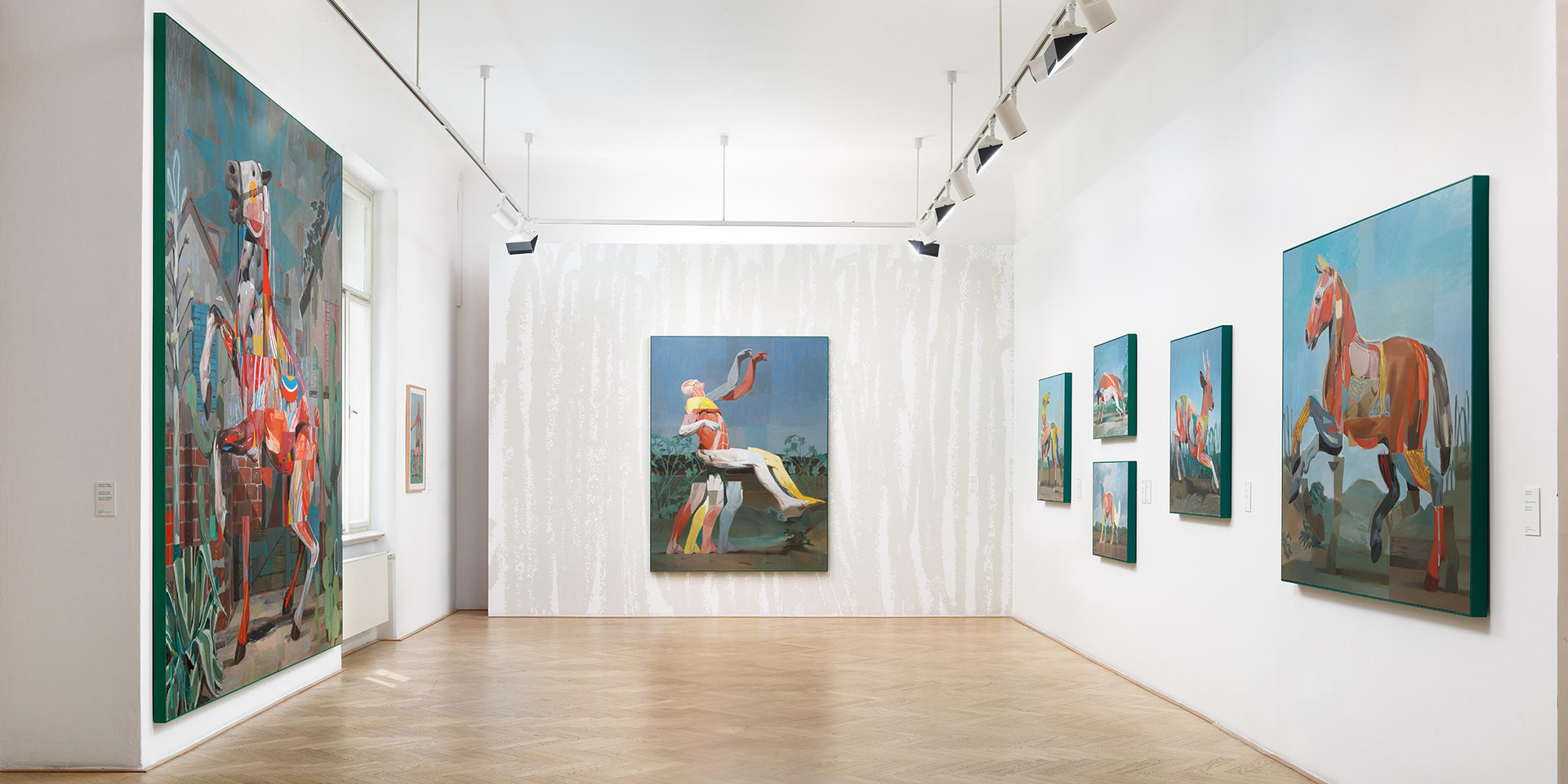
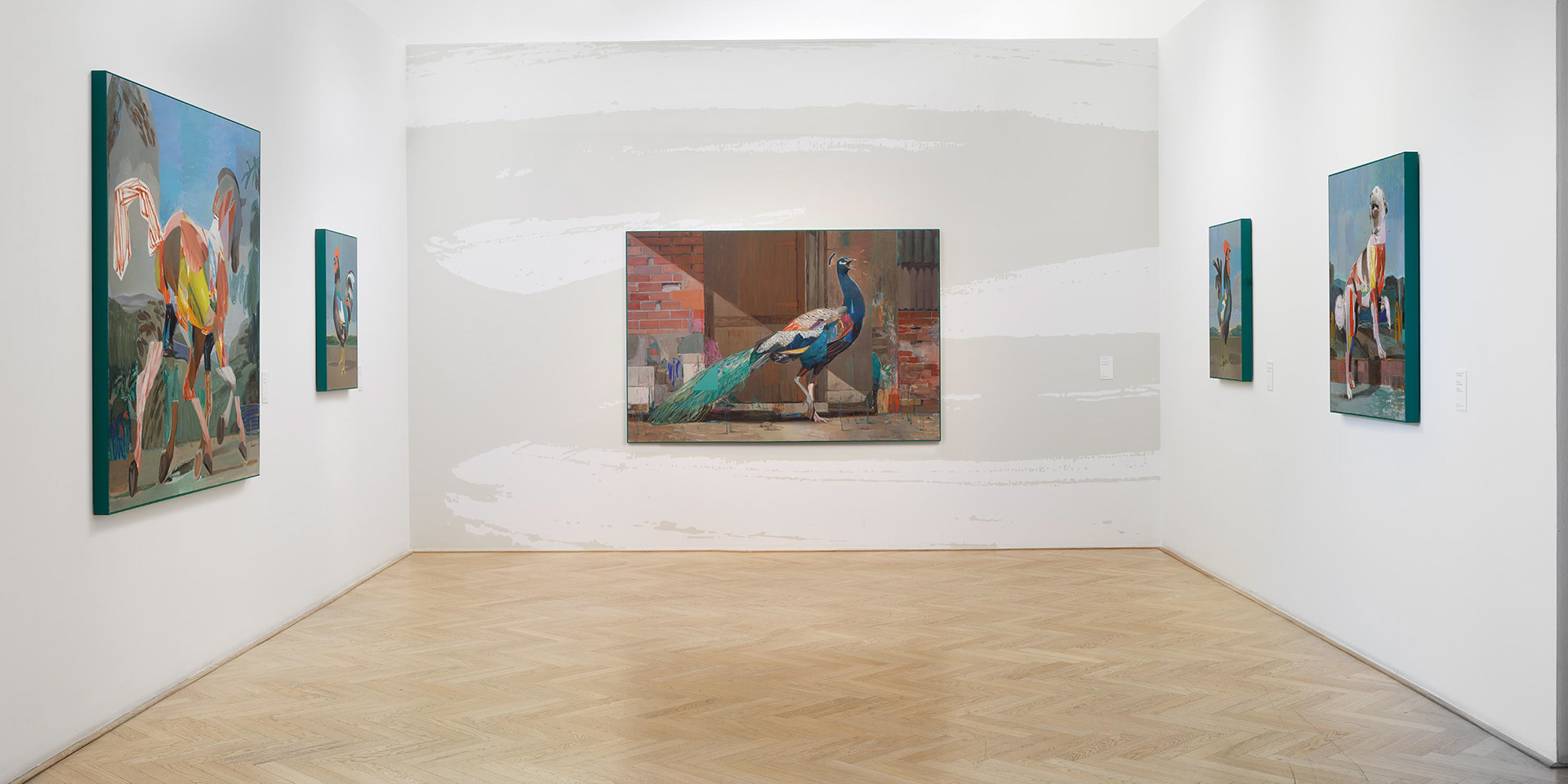
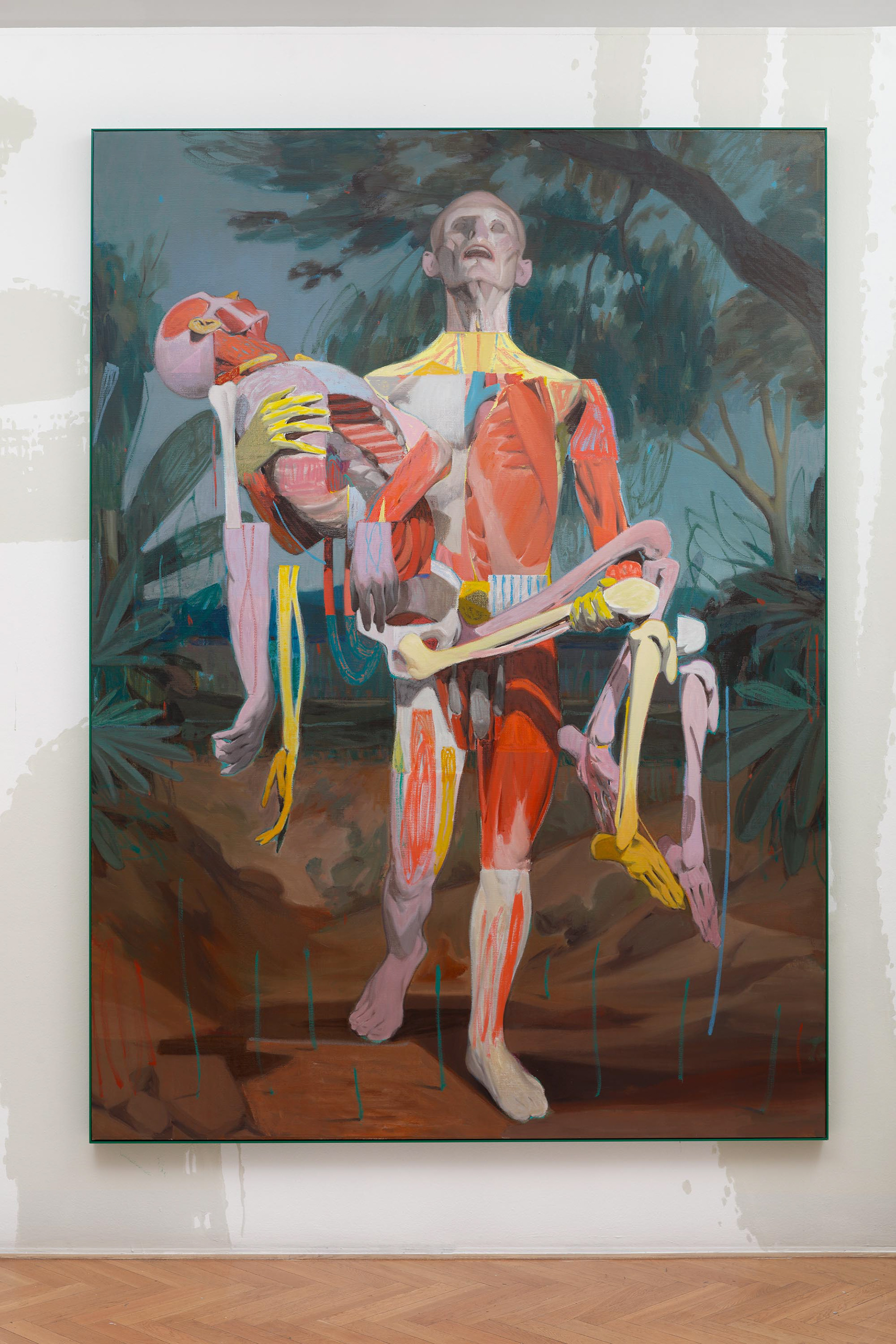
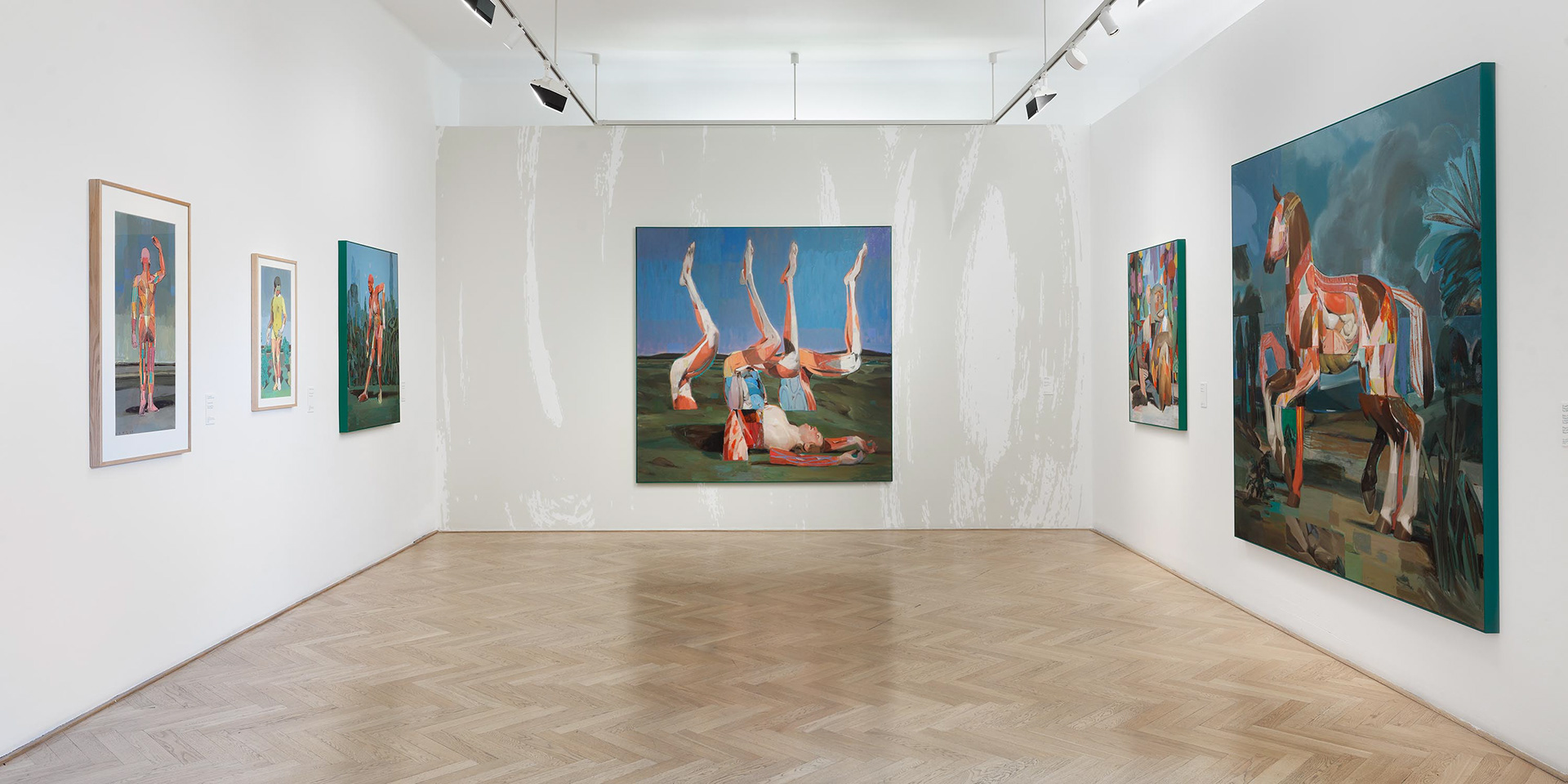
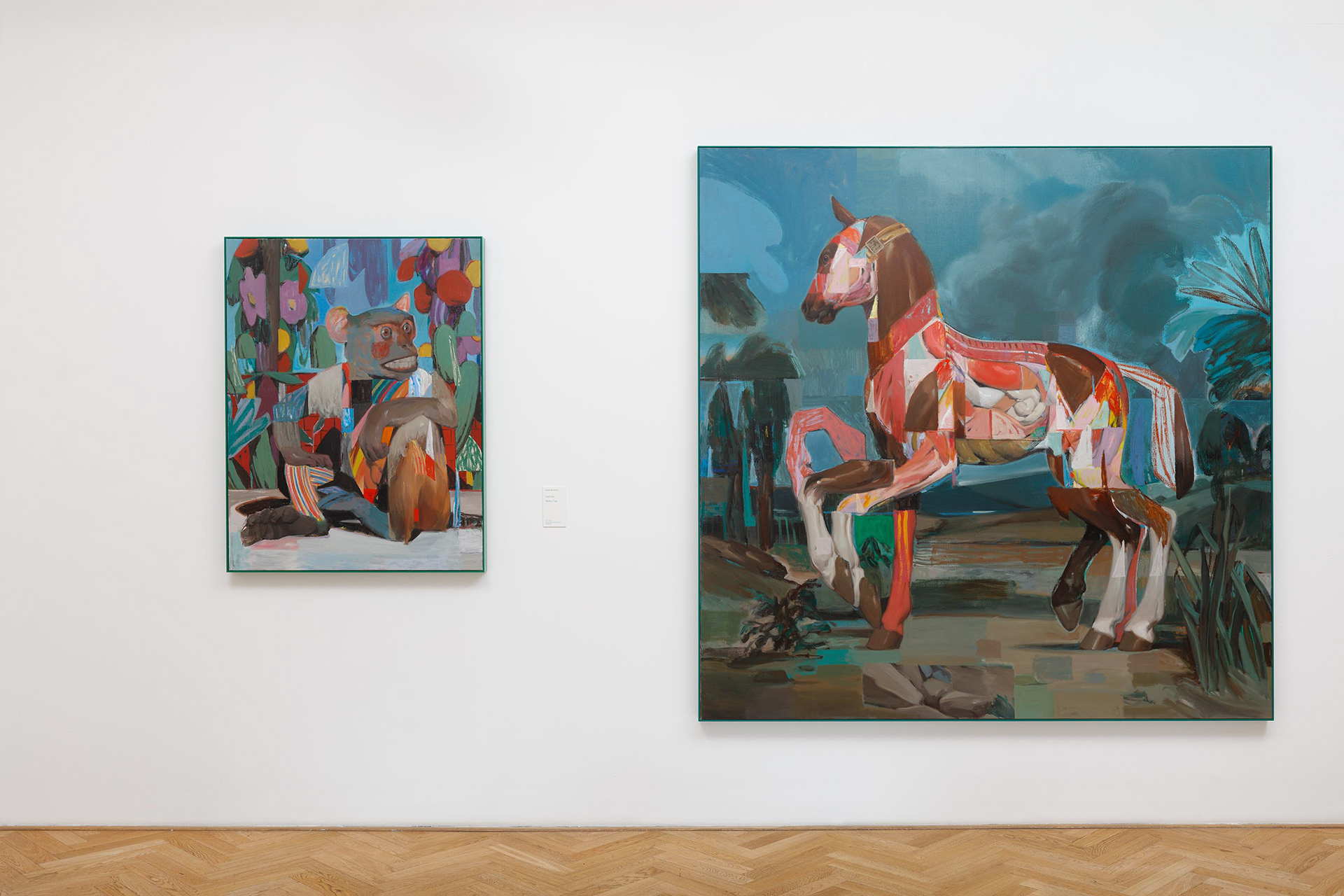
At a quick glance, the art of Octavi Arrizabalaga, known mainly under the pseudonym Aryz, catches the eye by attractive colours, simple compositions, and famous forms that gradually break into disturbing fragments of the depicted reality. Animals or figures, anchored in unspecified natural sceneries, appear in borderline situations existing between tradition and unconventionality, history and the future. Classical painting procedures are combined with digital defragmentation, and static motifs are gradually transformed into dynamic records. Oil paintings communicate a wide scope of feelings and emotions, and with typical showiness present the remains of more or less familiar models.
Similar to the artistic paths of many artists, Aryz’s story began with a teenager fascination with graffiti that naturally combine enthralling principles of fast communication with the wide public, dynamic transformation of the urban environment, and also the appropriation of the collective space. He soon exchanged the spray for the brush and produced monumental murals throughout most of the world, but it was painting canvases that dynamised the development of his artistic style and initiated his entrance to gallery institutions, as well as sacral buildings and the public space with monumental painting installations.
Aryz is primarily interested in the act of painting itself that, along with the dialogue with history, serves him to create a new reality. Clear echoes of Baroque, Romanticism, Fauvism, Spanish Cubism or historical propaganda posters mingle with the legacy of photography and contemporary figural tendencies developed within the New Leipzig School led by Neo Rauch. Whether it is a tension in the art of the Spanish giants such as Francisco Goya (1746–1828) and Diego Velázquez (1599–1660), geometric decomposition by Pablo Picasso (1881–1973), or the manipulation with colours, shapes, and dynamics in the works of František Kupka (1871–1957), his collage-like approach to the medium of painting reveals a clear interest in colour, figure, corporeality, and movement.
The premiere exhibition of the Catalan artist in the Czech Republic, in Villa Pellé Gallery, features a selection from the current Vestigio series that has gradually been coming into existence since 2021. One of the indisputable aspects of the artist’s work is his unflagging desire to experiment and develop his own artistic expression. His previous series entitled Pugna (2019) described intensely, even explicitly, the theme of resistance, struggle, melancholy, and violence associated, among other things, with the authoritarian Francoist regime in Spanish history between 1939 and 1975. The challenging topic, which to a certain extent was moderated with bright complementary colours, focused his attention to the painted record of dynamics and movement.
He continues to draw inspiration from the movement studies of the English pioneer of photography Eadweard Muybridge (1830¬–1904) and the French scientist and chronophotographer Étienne-Jules Marey (1830–1904), and he continues to paint figural compositions, albeit this time depicting primarily body and animal motifs. Through an expressive painting style and a kind of fragmentation of body parts, he depicts dynamic movement on the surfaces of various-format canvases, accelerated by phased limbs reminiscent of digital glitches, as well as by layering oil paints and assembling and overpainting particular parts of paintings.
With traditional compositions and by the selection of motifs, the series on display is more classical than the previous one. While in the past the main narrative was grounded in the interaction of figures, the artist currently focuses on a simple central motif that attracts our attention and directs it to the individual details of the painting.
In the works of Old Masters, Aryz is fascinated by details that reveal something about the previous painting versions. What others would see as a mistake, the artist purposefully imparts onto his procedures to build compositions or create an illusion of movement. The principle of learning from ‘mistakes’ is documented by the first painting from the current series Los Autónomos (2019) – an overcrowded multi-figural scene dissolving into flat geometry. The flashes of tension, pain, and fear, still associated with emotions in the previous series Pugna, reveal in the painting’s background the artist’s inspiration by Goya’s fascinating work The Third of May 1808 (1814) that represented a ground-breaking archetype in depicting the horrors of war. While weapons were still present in Aryz’s original composition, he gradually overpainted them until they disappeared completely. Yet, he retained the hand gestures, fear, and suffering in the mimic of some figures to clearly communicate the burdensome narrative.
It is no coincidence that the Spanish word vestigio which translates as a relic (vestige) became the central motif functionally interlinking the concept of the monographic exhibition. Parts of limbs, anatomic uncovering of body layers, as well as direct quotations of historical paintings represent the remains that serve as the main composition tool. Whether we associate vestigio with concrete physical fragments or abstract consequences of processes and events, in collages we uncover archaeologically diverse residues existing in various space-times.
Collage, a technique primarily associated with combining various visual and ideational material, serves Aryz as a method to build his paintings. As opposed to a linear approach to visual compositions we follow a more scattered manner liberating the artist to a greater extent. By gradually filling in, layering and overpainting the motifs and coloured parts, he creates novel dialogues linking references from the past with his own vision and imagination. The mode of creating ideational or visual collages gives the painter an ample space for building unique narratives, as well as for a boundless search of the final version of the artwork.
The portraits of animals and anatomic studies cannot be perceived only in their bare essence, or as the only plan of paintings. The painting areas dynamise precisely the individual segments. From drawing parts, the artist proceeds to fine painting transitions, and from realistic depictions to gestural abstraction. He combines direct quotations with his own intuition, leaving free space to our analysis and imagination. He places non-realistic, yet visually harmonious, combinations of colours in non-specific natural sceneries that are also a blend of fiction or fragments from botanical gardens. It is not necessary to know the artist’s real references but knowing that they exist shifts the experience from Aryz’s art to a higher level.
Therefore, the motif of a rooster (e.g. Cocorico de Steinlen, 2021) is not only a banal depiction or a painting study, and although it is related to abundant symbolism, metaphors, and ideational connotations, it primarily is a tribute to the Art Nouveau painter and graphic artist Théophile Steinlen (1859–1923). It was his rooster that attracted the artist’s attention. Further quotations are found in the original Hellenist sculpture of a dog (Molossus, El perro de Alcibíades, 2022) or in the details of the Flemish Baroque painter Paul de Vos (e.g. El perro de caza de Paul de Vos, 2021). It is evident that Aryz’s painting world is full of history, emotions, tension, and beauty. His works catch one’s eye at first glance, and it is up to us how much time and energy we spend with the details and how deeply we immerse ourselves in the bowels of the artist’s fascinating world.
Aryz (Octavi Arrizabalaga) was born in Palo Alto, California, in 1988. As a child, he moved to Spain with his parents. They settled in a little town, Cardedeu, near Barcelona where he has been living and working to this day. He studied at the Fine Arts University of Barcelona.
Pri letmom pohľade tvorba Octaviho Arrizabalagu, známeho hlavne pod pseudonymom Aryz, zaujme príťažlivou farebnosťou, jednoduchými kompozíciami i známym formami, ktoré sa postupne trieštia na znepokojivé fragmenty zobrazovanej reality. Zvieratá či postavy ukotvené v bližšie nešpecifikovaných prírodných scenériách sa ocitajú v hraničných situáciách jestvujúcich medzi tradíciou a nekonvenčnosťou, dejinami a budúcnosťou. Klasické maliarske postupy sa miesia s digitálnou defragmentáciou a statické motívy postupne prechádzajú do dynamických záznamov. Olejomaľby komunikujú široký rozptyl pocitov a emócií a s príznačnou teatrálnosťou prezentujú pozostatky viac či menej povedomých predobrazov.
Podobne ako umelecké cesty mnohých maliarov a maliarok, aj Aryzov príbeh sa začal tínedžerskou fascináciou graffiti, v ktorých sa prirodzene spájajú podmanivé princípy rýchlej komunikácie so širokou verejnosťou, dynamické premeny urbánneho terénu, ako aj privlastňovanie spoločného priestoru. Zakrátko spreje zamenil za štetce a začal realizovať monumentálne muraly takmer po celom svete. Boli to však maliarske plátna, ktoré zdynamizovali vývoj autorského rukopisu a iniciovali jeho vstup do galerijných inštitúcií, ako aj do sakrálnych stavieb a verejných priestorov prostredníctvom monumentálnych maliarskych inštalácií.
Aryza v tvorbe zaujíma predovšetkým samotný akt maľby, ktorý mu slúži spoločne s dialógom s históriou na vytváranie novej reality. Zreteľné ozveny baroka, romantizmu, fauvizmu, španielskeho kubizmu či historických propagandistických plagátov sa miešajú s dedičstvom fotografie a súčasnejších figurálnych tendencií rozvíjaných v rámci Novej lipskej školy na čele s Neom Rauchom. Či už je to tenzia v tvorbe španielskych velikánov ako Francisco Goya (1746–1828) a Diego Velázquez (1599–1660), geometrický rozklad reality v podaní Pabla Picassa (1881–1973), alebo narábanie s farbou, tvarmi a dynamikou v dielach Františka Kupku (1871–1957), v jeho kolážovitom prístupe k maliarskemu médiu je zreteľný záujem o farbu, figúru, telesnosť či pohyb.
Premiérová výstava katalánskeho umelca v Českej republike v galérii Villa Pellé ponúka výber z aktuálnej série Vestigio, ktorá priebežné vzniká od roku 2021. Jedným z neodškriepiteľných aspektov autorovej tvorby je neutíchajúca túžba experimentovať a vyvíjať vlastný výtvarný prejav. Jeho ostatná séria Pugna (2019) intenzívne a priam explicitne približovala odpor, boj, smútok, melanchóliu a násilie späté okrem iného aj s autoritatívnym frankistickým režimom v španielskej histórii medzi rokmi 1939 a 1975. Náročná téma, ktorú do istej miery zjemnilo použitie žiarivých komplementárnych farieb, upriamila jeho záujem na maliarsky záznam dynamiky a pohybu.
Aj naďalej sú mu inšpiráciou pohybové štúdie anglického priekopníka fotografie Eadwearda Muybridgea (1830 – 1904) a francúzskeho vedca a chronofotografa Étienna-Jula Mareyho (1830 – 1904) a pokračuje v maľovaní figurálnych kompozícií zobrazujúcich tentoraz hlavne telesné a zvieracie motívy. Prostredníctvom expresívneho maliarskeho rukopisu a akejsi fragmentarizácie telesných častí zobrazuje na plochách rôznoformátových plátien dynamický pohyb akcelerovaný rozfázovaním končatín pripomínajúcim digitálne glitche, ako aj samotným vrstvením olejových farieb, skladaním a premaľovávaním jednotlivých častí obrazov.
Vystavená séria je svojimi tradičnými kompozíciami, ako aj výberom motívov klasickejšia než tá predchádzajúca. Zatiaľ čo v minulosti hlavný naratív tvorili vzájomné interakcie osôb, v súčasnosti sa sústreďuje hlavne na jednoduchý centrálny motív, ktorý priťahuje našu pozornosť a vedie ju k jednotlivým detailom maľby.
Na dielach starých majstrov Aryza fascinujú detaily, ktoré prezrádzajú niečo o predchádzajúcich maliarskych verziách. To, čo by iní považovali za chybu, si autor cielene prepožičiava do vlastných postupov na budovanie kompozícií či vytváranie ilúzie pohybu. Princíp poučenia sa z omylov dokumentuje prvý obraz z aktuálneho cyklu Los Autónomos, (2019) – preplnená multifigurálna scéna rozpúšťajúca sa do plochej geometrie. Záblesky napätia bolesti a strachu, ktoré ešte súvisia s emóciami predchádzajúcej série Pugna, odkrývajú na pozadí obrazu autorovu inšpiráciu Goyovým fascinujúcim obrazom Popravy 3. mája 1808 (1814), ktorý predstavoval prelomový archetyp zobrazovania hrôzy vojny.
V pôvodnej Aryzovej kompozícii síce ešte figurovali zbrane, no postupne ich premaľoval až kompletne zrušil. Z predošlých vrstiev však zachoval gestá rúk, strach či utrpenie v mimike niektorých postáv, prostredníctvom ktorých zreteľne komunikuje ťaživý naratív.
V pôvodnej Aryzovej kompozícii síce ešte figurovali zbrane, no postupne ich premaľoval až kompletne zrušil. Z predošlých vrstiev však zachoval gestá rúk, strach či utrpenie v mimike niektorých postáv, prostredníctvom ktorých zreteľne komunikuje ťaživý naratív.
Nie je náhoda, že práve španielske slovo vestigio, ktoré môžeme preložiť ako pozostatok, sa stalo centrálnym motívom funkčne spájajúcim koncepciu monografickej výstavy. Kúsky končatín, anatomické odkrývanie telesných vrstiev, ale aj priame citácie historických obrazov predstavujú ostatky, ktoré slúžia ako hlavný kompozičný nástroj. Či už vestigio spájame s konkrétnymi fyzickými fragmentmi alebo abstraktnými dôsledkami procesov a udalostí, v kolážach archeologicky odkrývame rozmanité rezíduá existujúce v odlišných časopriestoroch.
Techniku koláže, ktorá sa primárne spája s kombinovaním rozličných vizuálnych a ideových materiálov, Aryz využíva na budovanie obrazov. Na rozdiel od lineárneho vytvárania vizuálnych kompozícií sledujeme akýsi roztrúsenejší prístup, ktorý mu dáva väčšiu voľnosť. Postupným vypĺňaním, vrstvením, ale aj premaľovávaním motívov a farebných častí vytvára nové dialógy spájajúce odkazy z minulosti s vlastnou víziou a fantáziou. Spôsob tvorby ideových či vizuálnych maliarskych koláží poskytuje autorovi široký priestor na stavanie unikátnych naratívov, ako aj na nekonečné hľadanie finálnej verzie obrazu.
Portréty zvierat a anatomické štúdie nemožno vnímať len v ich holej podstate či ako jediný plán obrazov. Obrazové plochy dynamizujú práve jednotlivé segmenty. Od kresbových častí sa autor dostáva k jemným maliarskym prechodom a od realistických zobrazení ku gestickej abstrakcii. Priame citácie mieša s vlastnou intuíciou, pričom ponecháva voľný priestor našej vlastnej analýze a imaginácii. Nerealistické, ale zato vizuálne harmonické farebné kombinácie vkladá do nekonkrétnych prírodných scenérií, ktoré sú takisto mixom fikcie či útržkov z botanických záhrad. Nie je nutné poznať skutočné autorove referencie, ale vedomosť o ich existencii posúva zážitok z Aryzovej tvorby na vyššiu úroveň.
Motív kohúta (napr. Cocorico de Steinlen, 2021) preto nie je len banálnym zobrazením či akousi maliarskou štúdiou, a hoci sa k nemu viaže množstvo symboliky, metafor a ideových konotácií, je primárne poctou secesnému maliarovi a grafikovi Théophilovi Steinlenovi (1859 – 1923). To jeho kohút upútal autorovu pozornosť. Ďalšie citácie nachádzame v pôvodnej helenistickej soche psa (Molossus, El perro de Alcibíades, 2022) či v detailoch flámskeho barokového maliara Paula de Vos (napr. El perro de caza de Paul de Vos, 2021). Je zrejmé, že Aryzov maliarsky svet je plný histórie, emócií, napätia aj krásy. Jeho diela zaujmú aj na prvý pohľad a je len na nás, koľko času a energie venujeme jednotlivým detailom a či sa ponoríme do útrob autorovho fascinujúceho sveta.
Aryz (Octavi Arrizabalaga) sa narodil v roku 1988 v meste Palo Alto v Kalifornii. Ako malý chlapec sa s rodičmi presťahoval do Španielska. Usídlili sa v malom meste Cardedeu pri Barcelone, kde doteraz žije a tvorí. Študoval na Fakulte umení na Barcelonskej univerzite.
